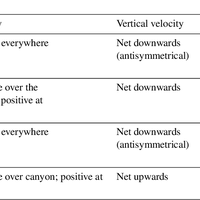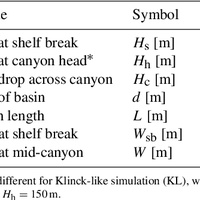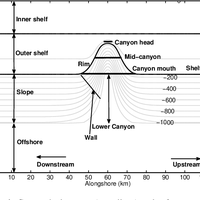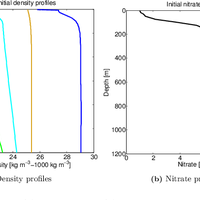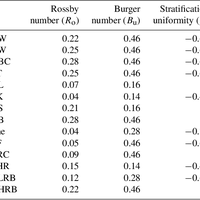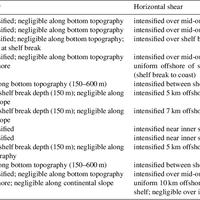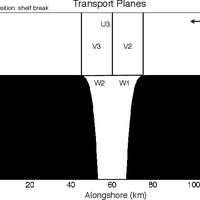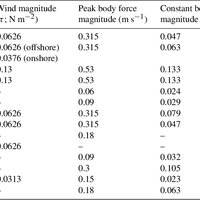Abstract
Flow dynamics around a downwelling submarine canyon were analysed with the Massachusetts Institute of Technology general circulation model. Blanes Canyon (northwestern Mediterranean) was used for topographic and initial forcing conditions. Fourteen scenarios were modelled with varying forcing conditions. Rossby and Burger numbers were used to determine the significance of Coriolis acceleration and stratification (respectively) and their impacts on flow dynamics. A new non-dimensional parameter (χ) was introduced to determine the significance of vertical variations in stratification. Some simulations do see brief periods of upwards displacement of water during the 10-day model period; however, the presence of the submarine canyon is found to enhance downwards advection of density in all model scenarios. High Burger numbers lead to negative vorticity and a trapped anticyclonic eddy within the canyon, as well as an increased density anomaly. Low Burger numbers lead to positive vorticity, cyclonic circulation, and weaker density anomalies. Vertical variations in stratification affect zonal jet placement. Under the same forcing conditions, the zonal jet is pushed offshore in more uniformly stratified domains. The offshore jet location generates upwards density advection away from the canyon, while onshore jets generate downwards density advection everywhere within the model domain. Increasing Rossby values across the canyon axis, as well as decreasing Burger values, increase negative vertical flux at shelf break depth (150 m). Increasing Rossby numbers lead to stronger downwards advection of a passive tracer (nitrate), as well as stronger vorticity within the canyon. Results from previous studies are explained within this new dynamic framework.
Figures
Register to see more suggestions
Mendeley helps you to discover research relevant for your work.
Cite
CITATION STYLE
Spurgin, J. M., & Allen, S. E. (2014). Flow dynamics around downwelling submarine canyons. Ocean Science, 10(5), 799–819. https://doi.org/10.5194/os-10-799-2014

